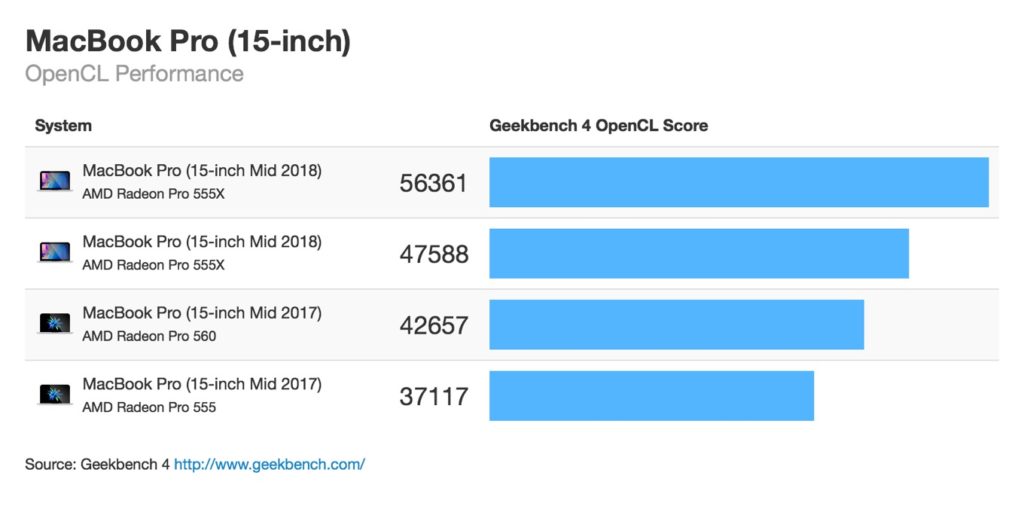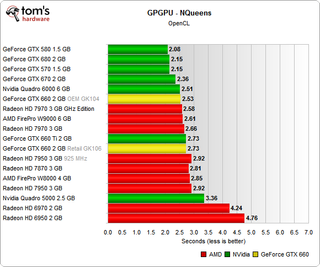

However, the Hogwild approach has been shown to work well in the case where updates across threads are unlikely to be to the same word. In theory, this can reduce the rate of convergence of algorithms as compared to a sequential run.
Opencl benchmark ucsd update#
Hogwild is a scheme where different threads process different word pairs in parallel and ignore any conflicts that might arise in the model update phases. This doesn’t allow us to use the parallel resources of the hardware. Because there is a dependency between the update from one iteration and the computation in the next iteration (they might happen to touch the same word representations), each iteration must potentially wait for the update from the previous iteration to complete. One of the main issues with SGD is that it’s inherently sequential. Distribution on multi-core and many-core architectures The algorithm then proceeds to the next iteration, choosing a different word pair. It then computes the gradients of the objective function with respect to the two chosen words, and updates the word representations of the two words based on the gradient values. At each step, it picks a pair of words, an input word and a target word, either from its window or from a random negative sample. The optimization in Word2Vec is done using Stochastic Gradient Descent (SGD), which solves the problem iteratively. In practice, skip-gram gives better performance but is slower. The objective of CBOW is to predict a word given its context, whereas skip-gram tries to predict the context given a word. Word2Vec comes in two distinct model architectures: Contextual Bag-Of-Words (CBOW) and Skip-Gram with Negative Sampling (SGNS). It directly tries to predict a word from its neighbors, in terms of learned dense embedding vectors (considered parameters of the model), in an unsupervised way. However, they take a lot longer to train compared to Word2Vec. Other deep or recurrent neural network architectures have also been proposed for learning word representations. Word2Vec is a neural network implementation that learns dense vector representations for words.
Opencl benchmark ucsd how to#
You can jump directly to the Getting started section for examples on how to use the algorithm for three different architectures. In the next section, we describe the implementation details. The vectors are used extensively for many downstream natural language processing (NLP) tasks like sentiment analysis, named entity recognition, and machine translation. The resulting vectors have been shown to capture semantic relationships between the corresponding words. Word2Vec is a popular algorithm used for generating dense vector representations of words in large corpora by using unsupervised learning. How do you make search engines tell you about soccer or Barcelona when you search for Messi? How do you make machines understand text data without explicitly defining the relationships between words, so that they can more efficiently perform classification or clustering? The answers lie in creating representations for words that capture their meanings, semantic relationships, and the different types of contexts they’re used in. This is a speedup of 11 times over one c4.8xlarge fastText CPU implementation, with minimal effect on the quality of the embeddings. On a single p3.2xlarge (1 Volta V100 GPU) instance, BlazingText can be 21 times faster and 20% cheaper than fastText on a single c4.2xlarge instance. For distributed training across multiple CPU nodes, BlazingText can achieve a training speed of up to 50 million words/sec on eight c4.8xlarge instances. Multiple CPU instances (distributed CPU training).Single instances with multiple GPUs, P2 or P3.Single CPU instances (like the original C implementation by Mikolov and fastText).We’re excited to make BlazingText, the fastest implementation of Word2Vec, available to Amazon SageMaker users on:

These are dense vector representations of words in large corpora. BlazingText is an unsupervised learning algorithm for generating Word2Vec embeddings. Today we’re launching Amazon SageMaker BlazingText as the latest built-in algorithm for Amazon SageMaker.


 0 kommentar(er)
0 kommentar(er)
